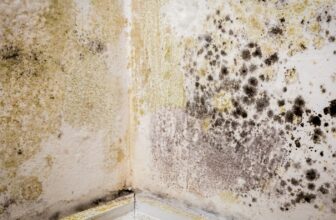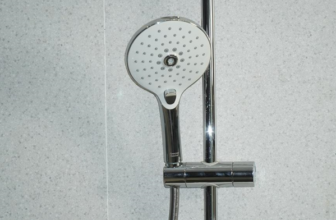
Surprise! Your Bathroom Just Declared War on Your Wallet & It’s a Steamy Battle

You walk into your bathroom every day expecting serenity. Steam rises from your shower. The tiles glisten. The mirror fogs up. Everything seems peaceful, until suddenly, it isn’t. A soft spot appears underfoot. Your water bill spikes. Or worse, black mold creeps across the ceiling like a quiet threat.
Bathrooms are more than just a backdrop to your daily routine. They’re one of the most damage-prone rooms in your home and one of the costliest to repair. Welcome to the steamy battle you didn’t know you were fighting.
Why Bathrooms Are High-Risk War Zones
Bathrooms combine two dangerous forces: water and time. Between humidity, fluctuating temperatures, and constant use, even a well-built bathroom is under stress 24/7. That makes them a prime spot for sneaky structural and plumbing issues to brew just beneath the surface.
According to the National Association of Home Builders (NAHB), bathroom remodels are among the most common home improvement projects. A 2024 survey revealed that 65% of remodelers reported bathroom renovations as a frequent job, highlighting their popularity and necessity due to issues like leaks, poor ventilation, and outdated plumbing.
And the worst part is that most people don’t realize there’s a problem until it’s become an emergency.
The Price Tag of a Plumbing Disaster
Burst pipe? Broken seal? Cracked toilet base? Welcome to the kind of unexpected repair that can blindside your budget. Even a small plumbing job, like fixing a leaky faucet, can cost between $150 and $400. More complex repairs? Think $1,000 and up.
Worse still, one issue can trigger another. A leaking pipe behind the wall may go unnoticed until the tile starts to buckle. And replacing tile isn’t just about matching color and pattern, it may require cutting into drywall, resealing, and waterproofing everything all over again.
When Moisture Turns into Mayhem
Let’s talk about water damage. That innocent-looking drip under your sink or the puddle you thought was from a splashed shower curtain? They’re early warning signs. If ignored, they can cause thousands of dollars in damage.

A minor leak can rot subflooring, swell cabinetry, and create the perfect breeding ground for mold. The EPA warns that mold can grow in as little as 24-48 hours in a damp environment. And once it sets in, removing it isn’t just expensive, it’s invasive. We’re talking demolition-level repairs.
Mold: The Silent Budget Killer
Out of sight shouldn’t mean out of mind, especially when it comes to mold. That musty smell? It’s trying to tell you something. And if you’ve got wallpaper peeling or paint bubbling, you’ve likely got a moisture problem behind the walls.
Mold remediation can cost anywhere from $500 to over $6,000, depending on the severity and how deeply it’s embedded in your structure. Not to mention the risk to your health. The Centers for Disease Control and Prevention (CDC) states that mold exposure can lead to various health issues, including nasal stuffiness, throat irritation, coughing, wheezing, eye irritation, and skin irritation. Individuals with mold allergies, asthma, or weakened immune systems may experience more severe reactions.
Tiles That Crack Your Calm
Tile isn’t just aesthetic, it’s functional. But when tiles start to crack, it’s rarely just a cosmetic issue. Cracks can allow water to seep into the layers below, leading to structural damage or mold. And because many tiles are glued down over concrete or subflooring, removing and replacing them is time-consuming and labor-intensive.

Replacing just a portion of your bathroom floor or shower wall could cost hundreds, even thousands if matching materials are no longer available.
Ventilation: The Overlooked Key to a Healthy Bathroom
Want to prevent the steamy war from escalating? Focus on ventilation. Proper airflow is your bathroom’s first line of defense. Exhaust fans should be powerful enough to clear moisture within 15–20 minutes of use. If they’re not, condensation will linger, clinging to mirrors, walls, ceilings, and paint, quietly eroding everything over time.
Winning the Battle: Prevention Over Panic
So, how do you stop your bathroom from declaring war on your wallet?
Do monthly moisture checks: Look under sinks, behind toilets, and around the tub. Feel for dampness and look for discoloration or soft spots.
- Inspect grout and caulk: These seals are your bathroom’s defense system. Re-caulk any gaps and regrout areas that are showing wear.
- Upgrade what matters: If your bathroom is more than 15 years old, consider modern water-saving toilets, mold-resistant drywall, and updated plumbing.
- Create a bathroom repair fund: Even $20 a month can give you a head start if disaster strikes.
And when an emergency does happen, like a burst pipe or sudden mold discovery, you might need access to money fast. In those cases, exploring reputable service providers that offer online loan solutions can help you cover urgent repair costs without draining your emergency fund or maxing out credit cards.
Don’t Let the Steam Fool You
Your bathroom might look like a spa retreat, but under the surface, it could be plotting a full-on budget ambush. The key to winning this steamy battle? Stay vigilant, act early, and don’t wait until damage demands your attention.
Peace of mind isn’t just about warm showers and fluffy towels; it’s knowing that your bathroom won’t betray you when you least expect it.




